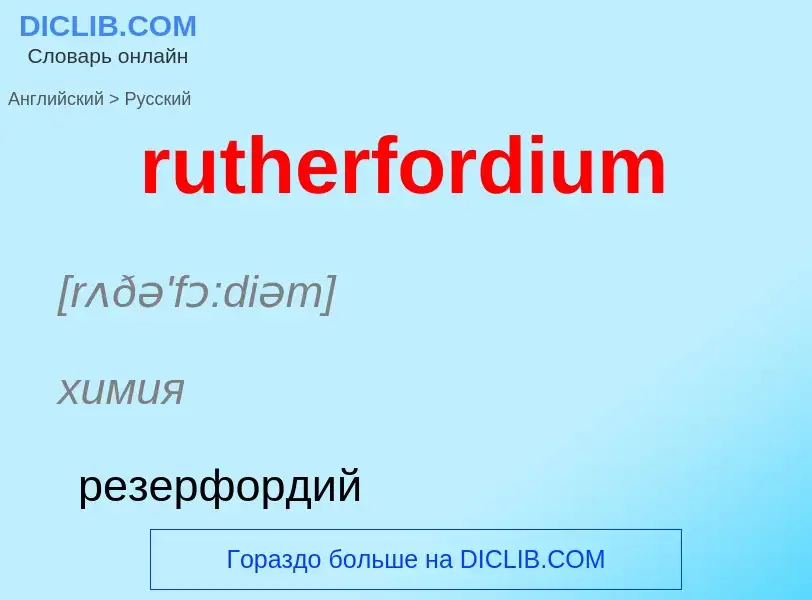Traducción y análisis de palabras por inteligencia artificial ChatGPT
En esta página puede obtener un análisis detallado de una palabra o frase, producido utilizando la mejor tecnología de inteligencia artificial hasta la fecha:
- cómo se usa la palabra
- frecuencia de uso
- se utiliza con más frecuencia en el habla oral o escrita
- opciones de traducción
- ejemplos de uso (varias frases con traducción)
- etimología
rutherfordium - traducción al ruso
[rʌðə'fɔ:diəm]
химия
резерфордий
существительное
химия
резерфордий
[kə:tʃə'təuviəm]
общая лексика
курчатовий
существительное
химия
курчатовий
[s(j)u:pər'æktinaidsi(ə)ri:z]
физика
ряд трансурановых элементов
Definición
Wikipedia
Rutherfordium is a chemical element with the symbol Rf and atomic number 104, named after New Zealand-born British physicist Ernest Rutherford. As a synthetic element, it is not found in nature and can only be made in a particle accelerator. It is radioactive; the most stable known isotope, 267Rf, has a half-life of about 48 minutes.
In the periodic table, it is a d-block element and the second of the fourth-row transition elements. It is in period 7 and is a group 4 element. Chemistry experiments have confirmed that rutherfordium behaves as the heavier homolog to hafnium in group 4. The chemical properties of rutherfordium are characterized only partly. They compare well with the other group 4 elements, even though some calculations had indicated that the element might show significantly different properties due to relativistic effects.
In the 1960s, small amounts of rutherfordium were produced at Joint Institute for Nuclear Research in the Soviet Union and at Lawrence Berkeley National Laboratory in California. Priority of discovery and hence the name of the element was disputed between Soviet and American scientists, and it was not until 1997 that the International Union of Pure and Applied Chemistry (IUPAC) established rutherfordium as the official name of the element.

![Element 104 was eventually named after [[Ernest Rutherford]] Element 104 was eventually named after [[Ernest Rutherford]]](https://commons.wikimedia.org/wiki/Special:FilePath/Ernest Rutherford2.jpg?width=200)

